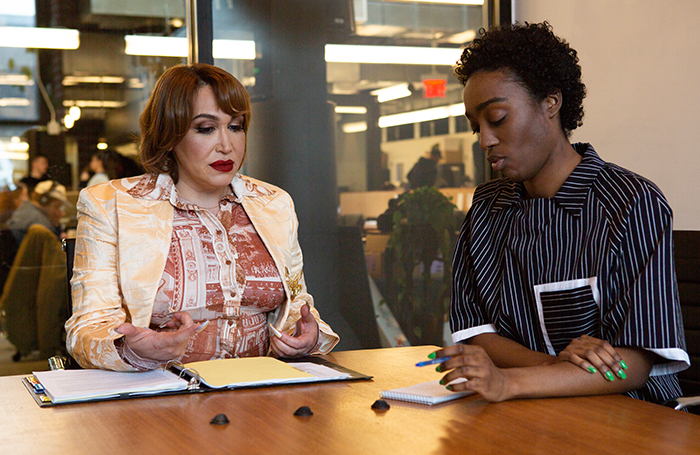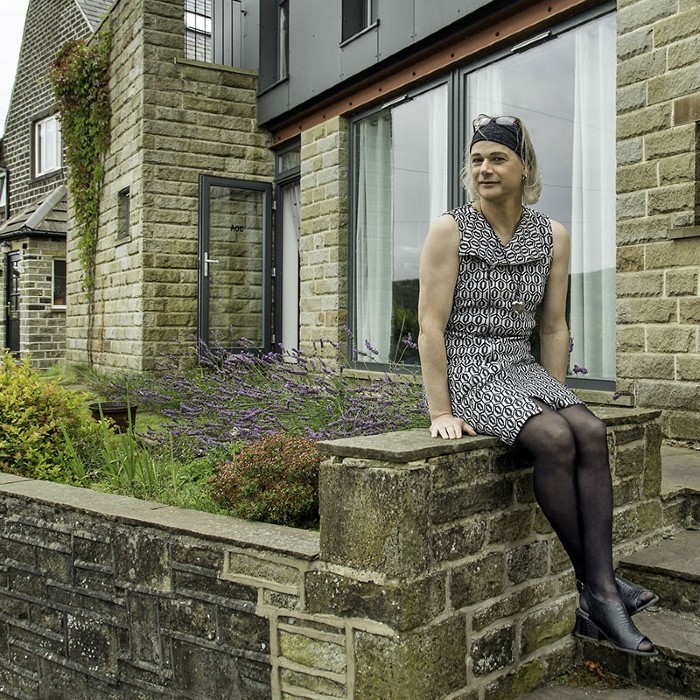In many different sectors, including architecture, employees are increasingly entering the workplace with gender identities and expressions that may challenge existing understandings and norms. In this blog, we explore how RIBA members can contribute to fostering positive and open discussions about gender, as we all work towards building a more inclusive profession.

While many transgender people identify on a binary scale – as either male or female – some do not, and may instead refer to themselves as “genderqueer,” “gender fluid,” “non-binary” or by using other terms. Such gender expansive identities are generally considered part of the greater transgender community.
These employees may opt to use gender expansive pronouns such as “they, them and theirs” instead of the gendered “he, him and his” or “she, her and hers.” In addition, gendered honorifics such as “Ms.” or “Mr.” may change to the more inclusive “Mx.”
Some key definitions:
- Transgender: Applies to a person whose gender is different from their "assigned" sex at birth
- Cisgender: Applies to someone whose gender matches their "assigned" sex at birth (ie someone who is not transgender)
- Non-binary: Applies to a person who does not identify as "male" or "female"
- Genderqueer: Similar to "non-binary" - some people regard "queer" as offensive while others embrace it, so it is important to be aware of context when using the word to identify others
- Genderfluid: Applies to a person whose gender identity changes over time
The way in which people refer to us through our name and pronouns is of course deeply personal. Using a person’s chosen name and pronouns is a form of mutual respect and basic courtesy. Everyone deserves to have their self-ascribed name and pronouns respected in the workplace.
The experience of being misgendered can be hurtful, angering, and even distracting. The experience of accidentally misgendering someone can be embarrassing for both parties, creating tension and leading to communication breakdowns across teams and with clients.
So, how can you create opportunities in the workplace for open discussion?
We recommend exploring opportunities where it might be appropriate to ask for or offer one’s pronouns. Here are some examples:
- Proactive verbal use of pronouns in the workplace. Example: “Everyone, I am pleased to introduce Sam who is transferring from the development team. They will be the lead person on the new product development project.”
- Make offering personal pronoun part of the introduction process at the start of meetings or events. Example: “We’re going to go around the room to introduce ourselves. Please say your name, the department you work in and, if you want, your personal pronouns.” “My name is Sam. I work in the development team. My pronouns are they, them, theirs.”
- Include personal pronouns in email signature lines.
- Corporate social networks or platforms, digital directories: Encourage employees to self-ID preferred name and pronouns as part of their profile.
- Recruitment process: Create a place to declare preferred name and pronouns. Many Applicant Tracking Systems (ATS) are driven by legal names. Creating an opportunity to disclose preferred names is a recommended best practice, not only for transgender and non-binary people but for anyone who uses a preferred nickname.
- Onboarding process: Create a place to declare preferred name and pronouns. Use these as the basis for introducing new employees.

RIBA Director of Inclusion and Diversity, Marsha Ramroop said:
“I’ll be working closely with my colleagues at the RIBA to create and encourage opportunities to normalise discussions about gender pronouns. It’s a simple and positive step to take and demonstrates great allyship – creating safe spaces for transgender and non-binary people to know that it is something we understand and care about. I ask all RIBA members and the wider profession to join me in doing so – by working together we can make real changes that will serve to create a more inclusive profession.”

Founder of Architecture LGBT+, Tom Guy said:
“Taking really simple actions like including gender pronouns in email signatures and social media biographies is a really effective way of normalising discussions about gender and creating an inclusive work environment for transgender and non-binary people. In doing so, it works towards creating environments where everyone can bring their whole self to work. This hopefully ultimately results in greater productivity, creativity and connection with colleagues and your organisational purpose. We’ll be working with the RIBA to encourage open discussions about gender pronouns across the sector.”

Architect, Danni Kerr said:
"Based on my own lived experience and discussions with transgender and non-binary colleagues, positive verbal affirmations of pronouns are of particular importance. When people do this, it not only demonstrates recognition and acceptance directly to their transgender and non-binary colleagues, but critically communicates and re-enforces this within the wider team. Often other team members are grateful as it informs them of somebody's correct pronouns and can help mitigate anxiety around this issue. If a colleague does misgender another colleague, you can positively support your transgender or non-binary colleague through your own practice and positive use of pronouns. This approach is really important when referring to transgender and non-binary colleagues who are not present, as well as in social situations and less formal work scenarios."
Further resources:









